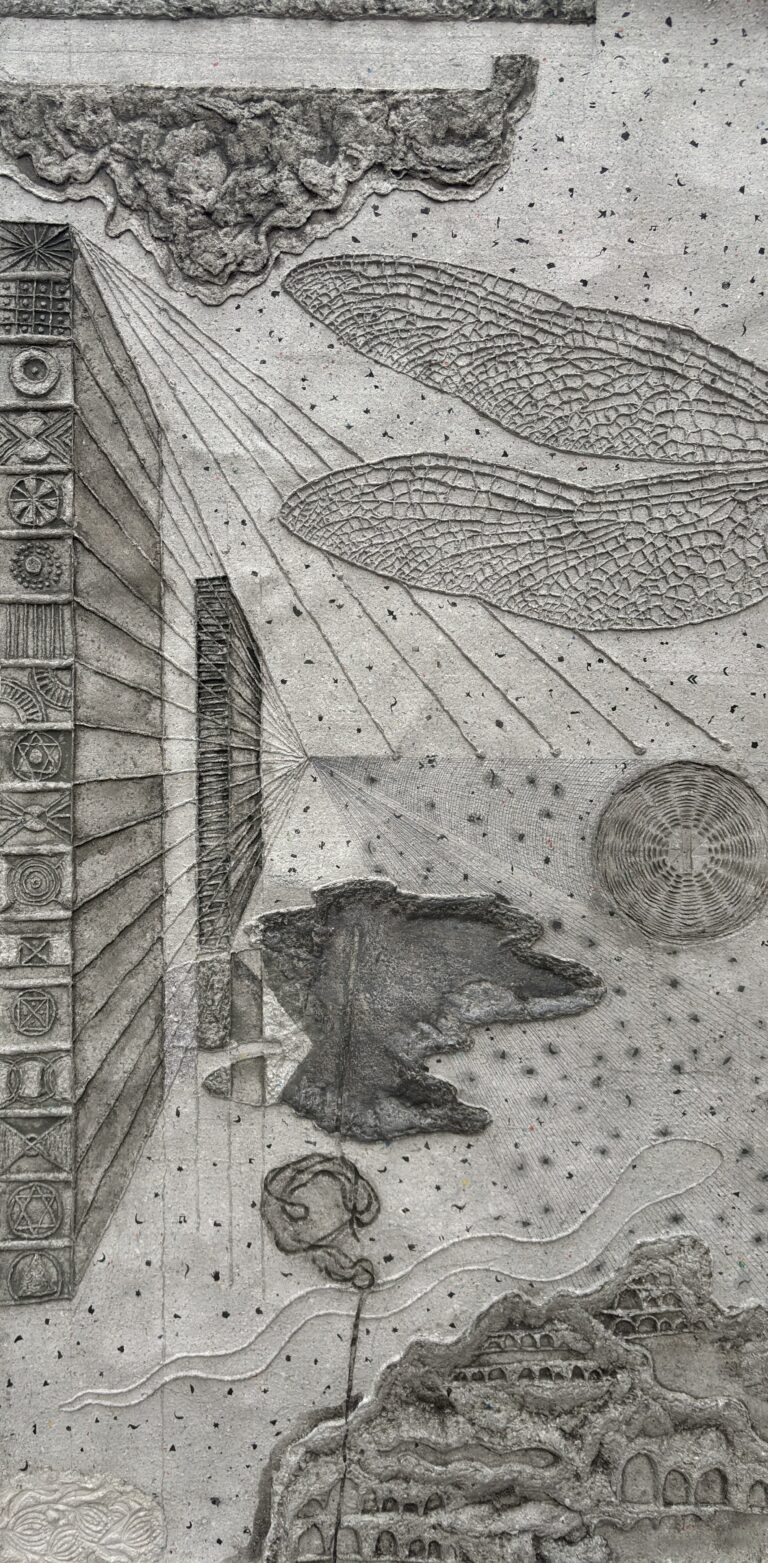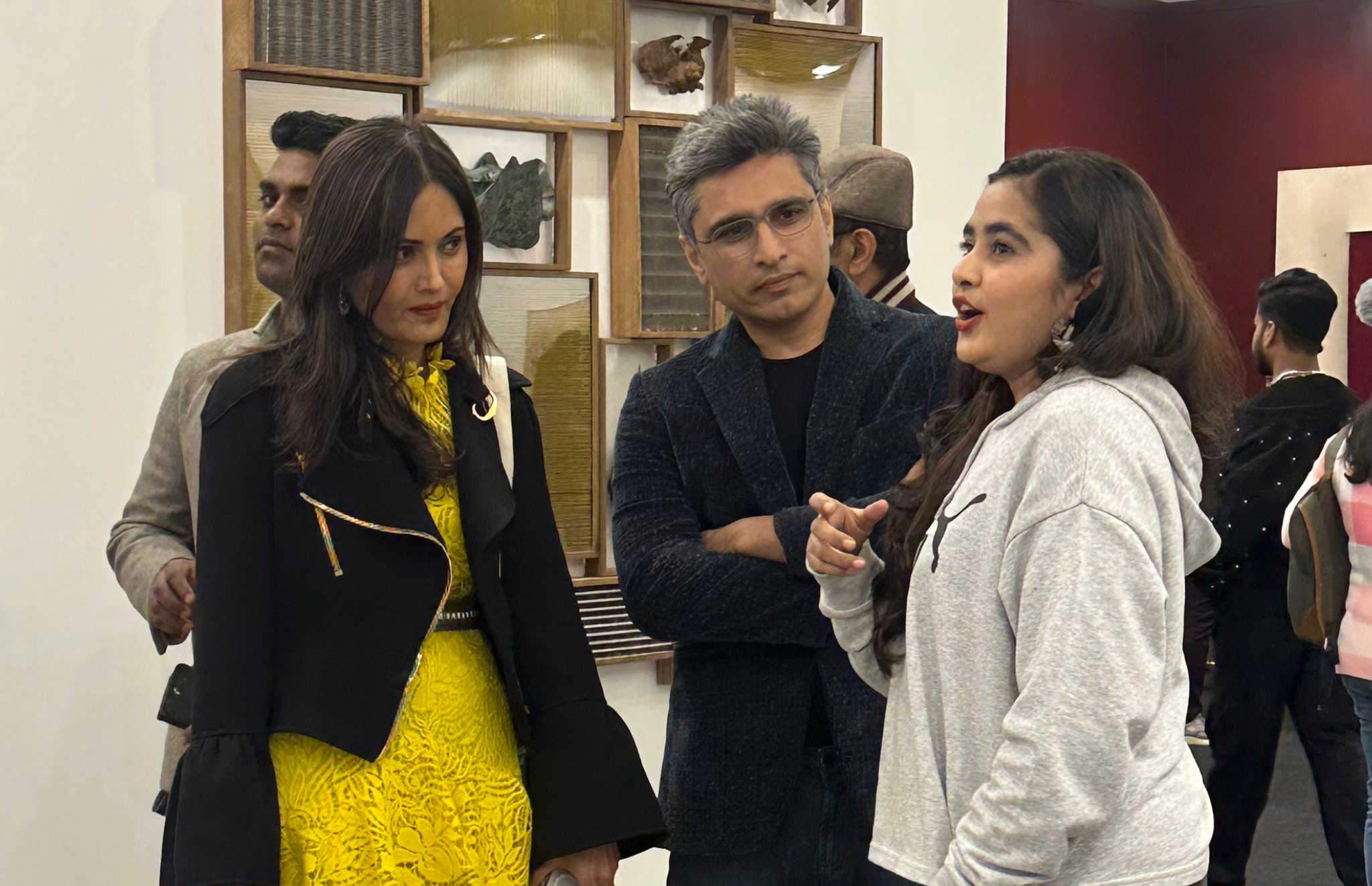Harssh Shah, founder of Iram Art Gallery in Ahmedabad, India, is dedicated to discovering and promoting artists who remain true to their vision, even when it goes against prevailing trends. After completing his MBA in International Business and Finance from the USA, he began getting involved in art projects. Driven by his passion for fostering both emerging and established artists, he transitioned from a successful corporate career to the art world. His intention drives Iram Art Gallery to success and along with it the growth of the artists that they associate with. He understands the importance of artists as well as the art collector’s needs, and strives to build a supportive community of emerging and established artists and fostering contemporary art in a city rich in cultural history.

Photo courtesy: Harssh Shah
SP: Could you talk about your journey from studying business management in the USA to contemporary art scenes in Ahmedabad?
HS: I come from a business family background and my education since school days revolved around commerce and management. Through several family trips in Europe while growing up, I was exposed to many art museums. This was my first exposure to art and probably those visits planted a seed in my subconscious. After coming back from the USA and having done my masters in finance and international business, I put my hands on various new business projects till I realised that my real calling was art. I started out collecting art by visiting local art galleries. Along the way, I realised that I made mistakes in art acquisition. I realised that had I done my homework well, I would have managed to acquire high quality work, save the amount I spent on art acquisitions, and not fall for the usual local names. That was the time I realised it was important for me to start a “movement” of promoting good quality art — identifying the most talented artists, promoting their practises to the global audience, and also start a learning initiative to educate new collectors how to navigate the art market.

Photo courtesy: Harssh Shah
SP: Could you tell us a bit about your gallery, Iram Art, and your journey in the art world?
HS: Iram Art’s primary focus is to identify blue chip category upcoming artists and give them the platform to showcase their talent to the global art audience. We spend a lot of time doing research identifying the right artist profiles before we even propose them to our clients. We work tirelessly in placing our gallery program artists’ works into important museums, foundations, private art collections and we also work very hard in pushing their practices to the most important biennales in the world.

Photo courtesy: Iram Art Gallery and Rakesh Patel
SP: What specific strategies does Iram Art employ to discover and promote emerging artists? Could you mention some honourable ones that you’d pleasure working with?
HS: To give an analogy, how difficult would it be for a student to get admission into an IVY league school in the USA. We have similar strict parameters of accepting artists onto our gallery program. The only exception being a local artist from Ahmedabad, Rakesh Patel, whom we took on board our gallery program, to give back to the city I come from and mentor him to reach newer heights in his art practice. We have Narayan Sinha on our gallery program who is a rising star with his works being placed in important global collections. We have Promiti Hossain whose works were shown at the Venice Biennale. We have Dinar Sultana whose works will be at a museum show in Europe very soon and we have Sangeeta Sandrasegar whose works were displayed at the Sharjah Biennale recently. All of our artists have been shown at various international art fairs that we participate in every year.

Photo courtesy: Iram Art Gallery and Dinar Sultana

Photo courtesy: Iram Art Gallery and Dinar Sultana
SP: How does being as an art collector inform your approach to promoting and mentoring artists? What lessons have you learned from your own art collecting journey?
HS: As mentioned, I made a lot of mistakes in my art acquisitions earlier, which in turn prompted me to start Iram Art as a passion project. Lack of information, lack of awareness and lack of research are common mistakes we all make. We are no longer in the 70s and 80s when there were a handful of artists and galleries. Today we have thousands of artists and hundreds of galleries. Out of this pool, one really needs to have a thorough research.. It is the gallery’s job to support artists in making their career and name. Gallery’s need to invest time and money in promoting an artist’s career. Working with collectors from across the world, I have realised the need, as a gallery, to have skin in the game. This crossed with the gallerist’s vision to contribute to the arts ecosystem at large, shows how serious they are in making an impact in the community.

Photo courtesy: Iram Art Gallery and Promiti Hossain
SP: Could you discuss the goals of the Iram Learning Initiative and how it complements your work with the gallery?
HS: The Iram Learning Initiative aims to offer access to high quality information via top academics, and industry professionals to a large demographic interested in learning about art, design, and other corresponding fields. Its vision is to foster a learning environment where participants from diverse backgrounds, especially those who do not have formal education in the arts can interact with and learn from the best minds working from the cultural industries and academia. Iram aims to fulfil this goal by offering programs across categories such as art-design-architecture histories, aesthetics, cognitive sciences, professional practices, practice based programs such as painting, drawing, etc. Every program that it designs, shall see professional practitioners as well as some of the best minds in academia at the helm of things. With such activities we intend to further the discourse of the arts from South Asia. As one of the academic’s from our program Asit Bhatt said, “…it builds a geographically dispersed creative community.” Recently we had Aniket Bhagwat and Tanishka Kachru for a fireside chat at the gallery where the discussion revolved around “Looking back for the future”. Aniket Bhagwat is a pioneer in landscape architecture in India and Tanishka Kachru, a senior faculty at NID, was once Assistant Curator for the Victoria & Albert Museum in London. On 24th August 2024, we have Professor Dr Thomas Mical coming to the gallery to talk about “Posthuman Apparatuses & Alien Durations”. Dr Thomas Michal is a tenured professor with a 3 decade long career in academics, being educated from Georgia Tech and Harvard University Graduate School of Design.

Photo courtesy: Iram Art Gallery and Narayan Sinha
SP: Could you tell us the curatorial process of “Embodied Vestiges”? How did you select Promiti Hossain and Dinar Sultana for the show? What unique perspective they contributed to the theme?
HS: We as a gallery are interested in working on extremely fundamental ideas. Crossed with the learning program, each exhibition at Iram goes beyond the artworks. The learning program, workshops, allow us to examine said ideas in a more informed and elaborate manner. The current exhibition came about with an innate desire of Satyajit (the curator of the exhibition) and mine to examine the role of Art in a Post Human future. We as a team are extremely mindful of environmental challenges becoming a real challenge in the present and not a thing of distant future, we wanted to understand the role of indigenous knowledge systems and so on for plausible direction(s) of our futures. While we were examining these ideas, we were very clear that at no point in the exhibition, should the artwork become solutions. Rather we wanted them to become nodal points to initiate new ideas, and possibilities for a cross disciplinary collaboration. It is here that Dinar and Promiti’s practice fit well. The panel discussions and the learning program through lectures and workshops allows us to take forward possible collaborations in this direction.

Photo courtesy: Sharjah Art Foundation
Photo credits: Shanavas Jamaluddin and Mark Ashkansy

Photo courtesy: Sharjah Art Foundation
Photo credits: Shanavas Jamaluddin and Mark Ashkansy
SP: What advice would you like to share with the young and emerging artists who are navigating the art world and finding their artistic voices?
HS: Rome was not built in a day. There is no shortcut to success. It is very important that right decisions are taken at every step along the journey to become a globally famous artist. Why are there only few names like Subodh Gupta, Bharti Kher, Jitish Kallat in the contemporary art world, who are globally recognised, and also coming from India. Other countries of the world would be having at least 50-100 such big names. We as a nation, we as gallerists, we have a huge responsibility on our shoulders. If we are to have a voice in the International stage, and a voice to be reckoned with, It can only happen with quality work with strong roots in academia, research, benchmarking against global best practices and many other factors. One of the key things alongside academics and conceptual rigour, there needs to be a focus on quality of finishing, innovation in material play, envision exhibition suitability of art works, logistical issues while transporting works, so on and so forth. There is so much more to art works, than just creating them. Top artists of the world have an innate sense of commerce, excellence in their processes and a unique language and voice.
Image Courtesy: Harssh Shah, Iram Art Gallery, Rakesh Patel, Dinar Sultana, Promiti Hossain, Narayan Sinha, Sharjah Art Foundation, Shanavas Jamaluddin, and Mark Ashkansy
Find out more about the gallerist and Iram Art Gallery: www.iramart.in





